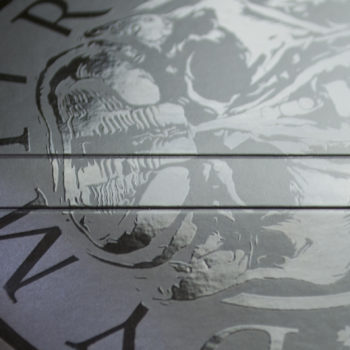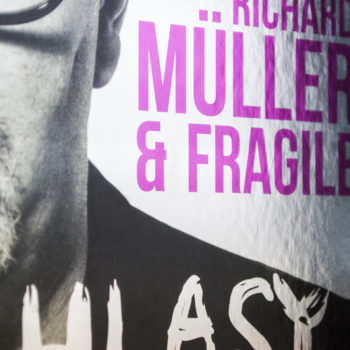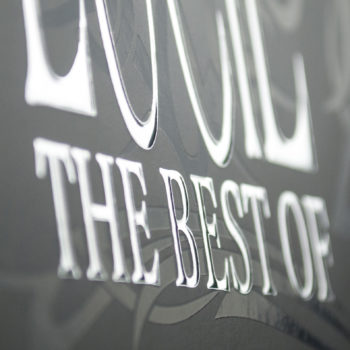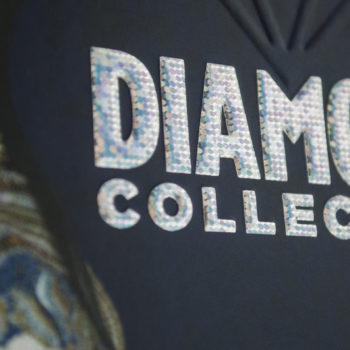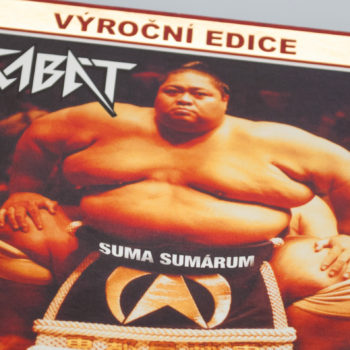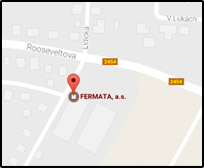print processing
lamination, coating, UV coating
Laminating
Paper is coated with plastic film – so your printed materials are easily and effectively protected against damage, dirt or dipping. Printed materials can be laminated up to a width of 78 cm.
You can choose from glossy, matt and velvet films.
Coating
The surface of printed matter is coated by lacquer which makes a film that protects the printed matter and also creates different effects. After curing, the applied film is as strong as in the liquid state during the application. That feature and affordable price ranks that type of coating among the most popular ones. The cured lacquer is very shiny and increases the life of the printed material. We can coat only certain parts of prints (partial lacquer), or use special UV lacquer (visual effects – icing, bubbles or spatial effects – reliefs).
We coat using UV through a screen up to the size B1. We fabricate those screens.
special effects
blind embossing
Blind embossing is a special stamping technique. It is always carried out by stamping in a stamping form under high pressure into a high-quality paper or leather. Most often a simple motif is stamped, such as a logo or a decorative element or ornament.
Blind embossing involves plastic deformation of paper under pressure and a special die. This creates an interesting relief surface, which increases the attractiveness of the final product. For this technology the right choice of paper is important. We prefer papers with a high percentage of cotton fibres in a grammage 80 – 350 gr/m2.
braille
Braille can be applied onto printed material in two ways. Either by application of an embossing paint, or by embossing points into the media as in blind embossing. We are able to offer and carry out both options.
hot embossing
Your prints can be improved by aplication with a foil. Hot embossing allows creating shiny metallic surfaces. The colour of the film can be essentially any – shiny or matt, most commonly gold and silver. We also use colours like copper, blue, green, red, pearl white, cream, pink, purple…
UV coating
UV coating has two functions in printing. Protective and estetic. The protective function means increase of the resistance to UV radiation and weathering or to mechanical damage of the prints. Coating that we use have various gloss levels, from matt to semi-matt and semi-gloss to high gloss. This effect is used in partial coating for highlighting signs, images, logos and other. Embossing lacquer has a similar function, enhanced by its high deposition layer enabling to achieve a 3D effect. Practical use is for example in Braille.
effect UV paints
Effect paints include those by using of which special decorative effects can be achieved, or those that can be used for special technical applications (e.g. safety signs luminous in the dark). They are primarily paints with special luminescent shades, i.e. fluorescent and phosphorescent (paints with afterglow), as well as transparent paints, special paints (e.g. board paint that can be written on by chalk), as well as metallic paints, pearl paints, glitters, mirror paints. There are also points that are provided with scents or those that can change hue due to light or heat.
Fragrant paints
Fragrant paints contain small fragrance – containing capsules that are blended into the paint. Customers use them by rubbing the dry printed paint with hand. In doing so, the capsules crackle and the scent can be distinctly smelled. The capsules come with different scents and need to be gently blended into the paint before the printing.
Fluorescent paints
Fluorescent paints work on the principle of photochemical luminescence, which means that they emit more light than falls on them but, unlike the paints with afterglow, they only shine in the light. They are available in several colours. They have a somewhat coarser pigment and the duration of their shelf life is shorter than that of other colour shades. Tints vary significantly with the duration and intensity of the UV light effect. This means that they fade fairly quickly in the sun. This process can be partially mitigated by overpainting of the print with a varnish with a UV filter.
Paints visible under UV – Luminophors
Luminescent paints emit more light than falls on them. The paints contain special phosphors. Luminophor (phosphor) is a substance capable of absorbing energy and then emit it in the form of light. Phosphors in paints react to UV light, which means that printing can be practically invisible and appear only under UV lamp or in UV light. They are used as protective elements or for decorative purposes (discos). They are available in several colours.
Scrape paints
Scratch paints are special paints which can reprint newspaper (usually offset) so as not to be visible under the paint. Properly printed scrape paint can be scraped off with a fingernail, blunt side of a knife or similar tool. Paints are available as solvent- or UV-based, usually either in the shades of gold or silver. When applied to absorbent materials, the paint needs to be under-printed with a varnish.
Board paints
Board paints are very matt paints that contain an abrasive ingredient that enables repeatable writing of the paint with school chalks and their subsequent residue-free clearing. When printing, it is necessary to follow the recommended procedure in terms of printing, drying and especially the recommended type of mesh. It should be noted that the paint is intended to be written on with school chalks only.
Glitters and pearls
Glitters and pearls are loose materials. They are usually small, pieces of polyester film assorted by size. During the print, it is necessary to select the mesh by particle size, so that the theoretical eye on the template was slightly larger than the largest particles of glitter or pearls. It is sensible to mix glitters or pearls into lacquers or transparent colours.
personification
We personify in black and in colour, of course there is the possibility of using duplex personification. For the personification, we use different types of paper (offset, matt gloss and recycled paper), weights of which ranges between 100 and 300 gr/m².
pagination
Pagination, otherwise also coloncipher, is a page digit. You can usually find it in the page footer, but can also be part of the entire header or foot.
bookbinding
bindings (V1-V8, ring)
hand bindings
To bind your documents we offer several types of bindings. Plastic or metal ring binding, possible are also bindings with metal backbone, UNIBIND and others. We can also bind your document using plastic strips. Their advantage is the ease of document binding without the use of machinery and other equipment.
sewn machine binding V1
Is suitable for text-book-type edition. Pages are clipped together in the backbone. The envelope may or may not be harder than the paper block. This binding has a limitation on the maximum number of pages thus made. It is not recommended to sew that method for more than 60 sheets (120 pages).
glued binding V2
Is glued soft binding. Folded and layered folders or sheets are milled in the backbone – roughened, bond with a thermo-adhesive and glued into an cover. Finally, they are cut on three sides.
sewn machine binding V8
Is a classic, sewn binding with hard book covers. Sheets are not just glued in the book block, but also stitched with a thread. It is the strongest book binding.
creasing
Creasing is one of the bookbinding techniques. Creasing is effected in stronger materials (from 175 g/m2 and above) and for example in soft binding covers. At the point where the paper needs to bent a score is impressed and the paper bents at that point without a secondary damage (cracking, breaking). Creasing is carried out to facilitate the subsequent easier bending or folding.
folding
Folding is another of bookbinding techniques, in which paper is folded into its final form, or simply folded. Folding is divided into: parallel, cross and the so-called accordion (pop-up).
In folding, paper is folded to the final format by a machine (folding machine) (e.g. A4 folded to 1/3), or simply just folded. Papers weighing up to 200 g may only be used.
In our printing house we fold formats up to 70 × 100 (B1).
cut-out
platen cut-out
Production cut-out to a format of 600 × 785 mm. Machines are designed for continuous operation for cutting out of all kinds of cardboard, corrugated cardboard, plastic foils and leather products.
platen machine
The machine is designed for cutting out paper and cardboard in the weight range of 80-600 g/m2 and corrugated cardboard to a thickness of 4 mm. Up to size B1. It is characterized by robust construction and accurate registration system.
digital laser cutting
Modern technology in recent years have been increasingly penetrating the printing industry, and even though some of them have not yet massively established themselves at home and globally, it is necessary to keep them in mind. One of those solutions is a digital laser cutting, when it is not required using of a cutting form unlike other cut-out types, but all operations are carried out using laser beam.
gluing
machine gluing
Variants can be selected using a dispersion or hot melt adhesive to ensure the maximum quality of the final product.
hand gluing
If your product is too complicated for machine gluing, our experienced operators will take care of it manually.
We use cold and heat gluing techniques for package bonding. We also use double-sided adhesive tape according to the type of product.
